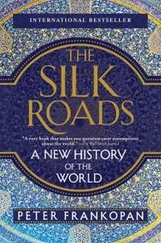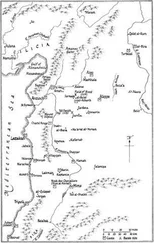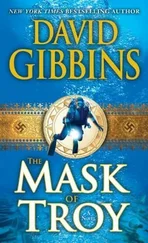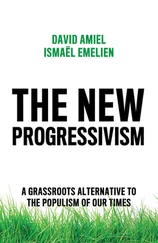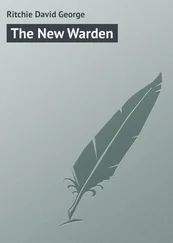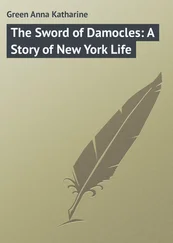Fred Sanger, Francis Crick, Linus Pauling, Tsutomu Watanabe, and other scientists played crucial parts in this chain of events too, sometimes by force of personality as well as by scientific brilliance. Slightly deeper in the past lie obscure figures such as Ferdinand Cohn, Edward Hitchcock, and Augustin Augier, as well as more famous ones, including Ernst Haeckel, August Weismann, and Carl Linnaeus. The ghost of Jean-Baptiste Lamarck rises here again to skulk along inescapably in the shadows of evolutionary thinking.
Such people, all contributors to a scientific upheaval, are of additional interest for the ways their works grew from their lives. They serve as good reminders that science itself, however precise and objective, is a human activity. It’s a way of wondering as well as a way of knowing. It’s a process, not a body of facts or laws. Like music, like poetry, like baseball, like grandmaster chess, it’s something gloriously imperfect that people do. The smudgy fingerprints of our humanness are all over it.
Humans aren’t the only important characters in this book. There are also a lot of other living creatures, whose unique histories and foibles illustrate points in the story I’m trying to tell. Many of them are microbes—those bacteria I’ve mentioned, those archaea, and other teeny things. Please don’t be fooled by their smallness; their implications and impacts are big. And don’t be daunted by their names, which are mostly expressed in scientific Latin: Bacillus subtilis and Salmonella typhimurium and Methanobacterium ruminantium and other monstrous tongue twisters. The reason I call them by those names is not because I like arcane language but because no other labels exist. Microbes generally don’t get the courtesy of common names at the species level, casual monikers such as southern giraffe, olive bunting, monarch butterfly, and Komodo dragon. If the bacterium known as Haemophilus influenzae could be accurately called Fleming’s nose-tickler, I promise you I would do it.
One other featured character, of the human sort, should be introduced here. He’s a bearded American microbiologist with a penchant for philosophical musing, tucked away at a university in Nova Scotia. This man has linked Carl Woese, Lynn Margulis, and much of the new work in molecular phylogenetics into a pungent challenge against biology’s central metaphor. His name is Ford Doolittle. He’s tall, diffident in manner though not in thought, and enjoys causing a little intellectual discomfort. At the turn of the millennium, Doolittle published an essay titled “Uprooting the Tree of Life,” which helped release a cascade of arguments. I caught wind of him through that essay and his related writings, notably those in which he discussed horizontal gene transfer and its implications. “Horizontal what?” was my earliest thought. Then I pilgrimed to Halifax and camped for days in his office. Doolittle is semiretired, still guiding graduate students, still well funded with a prestigious research grant, but no longer growing radioactive bacteria in a lab in order to deduce bits of their genomes (the totality of their DNA) from images on chest X-ray films. He’s no longer pulling chopped molecules through electrophoretic gels, as he did in the pioneer days. He reads, he thinks, he writes, he draws. (He takes art photographs, mainly for his own amusement, and occasionally mounts a gallery show, but that’s another realm of enterprise entirely.) In fact, part of what has made Ford Doolittle so influential is that, in addition to his qualifications in biology, he writes far better than most scientists—and he draws deftly, turning big concepts into graceful, cartoony shapes. Doolittle’s father was a painter and an art professor. Young Ford considered an art career himself, though his father called that “a terrible way to make a living.” Then, when he was fifteen years old, in 1957, the Soviets put Sputnik into space, persuading Ford and many other Americans that science and engineering were the more urgent, forceful pursuits. He went to Harvard College and studied biochemistry. The artistic impulse never left him. Nowadays, to illustrate his subversive thinking and his genial provocations, he draws trees that aren’t trees.
Woese, Doolittle, Margulis, Lederberg, Avery, Griffith, and the others—they all have their roles in this story. But a more natural starting point is much earlier: London, 1837, with a very different scientist, in a very different situation.
PART  I
I
1

Beginning in July 1837, Charles Darwin kept a small notebook, which he labeled “B,” devoted to the wildest idea he ever had. It wasn’t just a private thing but a secret thing, a record of his most outrageous thoughts. The notebook was bound in brown leather, with a tab and a clasp; 280 pages of cream-colored paper, compact enough to fit in his jacket pocket. Portable, but no toss-away pad. Its quality of materials and construction reflected the fact that Darwin was an affluent young man, living in London as a naturalist of independent means. He had arrived back in England just nine months earlier from the voyage of HMS Beagle.
That journey, consuming almost five years of Darwin’s life, on sea and land, mostly along the South American coastline and inland to the plains and mountains, though with notable other stops on the roundabout way home, would be the only major travel experience of his sheltered, privileged life. But it was enough. A mind-awakening and transformative opportunity, it had given him some large ideas that he wanted to pursue. It had opened his eyes to an astonishing phenomenon that demanded explanation. In a letter to his biology professor and friend John Stevens Henslow, back at Cambridge University, written from Sydney, Australia, Darwin mentioned his puzzling observations of the mockingbirds (not the finches) of the Galápagos Archipelago, a set of volcanic nubs in mid-Pacific. These gray, long-beaked birds differed from island to island but so subtly that they seemed to have diverged from one stock. Diverged? Three kinds of mockingbird? Varying slightly, this island to that? Yes: they appeared distinct but similar, in a way that suggested relatedness. If that impression were true, Darwin confided to Henslow, confessing an intellectual heresy, “such facts would undermine the stability of species.”
The stability of species represented the bedrock of natural history. It was taken for granted, and important, not just among clergy and pious lay people but scientists too. That all the varied forms of creatures on Earth had been fashioned by God, in special acts of creation, and are therefore immutable, was an article of faith to the Anglican scientific establishment of Darwin’s era. This tenet is known as the special-creation hypothesis, though at the time, it seemed less hypothesis than dogma. It had been embraced and supported by prominent naturalists and philosophers of the scientific culture within which Darwin had been educated at Cambridge. He was now home from his wildcat voyage, a youthful adventure with a bunch of rough English sailors, about which his stern father had been skeptical at the start. The experience had altered him—though not in the ways his father may have feared. He hadn’t become a drunk or a libertine. He didn’t curse like a bosun. Darwin’s wanderlust, satisfied physically, was now intellectual. He intended to investigate, very discreetly, a radical alternative to scientific orthodoxy: that the forms of living creatures weren’t eternally stable, as God had created them, but instead had changed over time, one into another—by some mechanism that Darwin didn’t yet understand.
Читать дальше
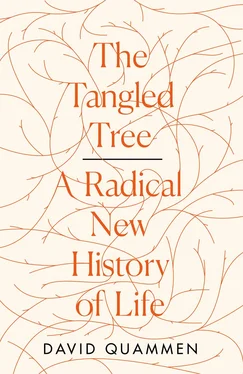
 I
I
